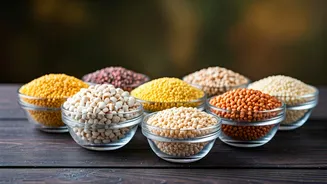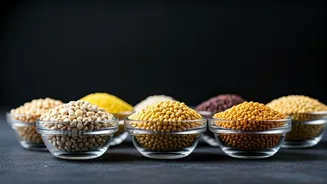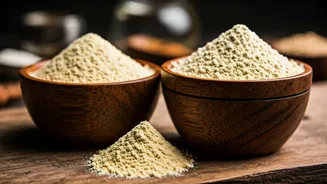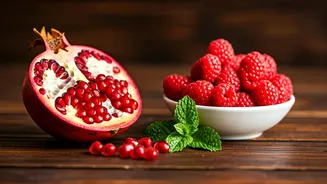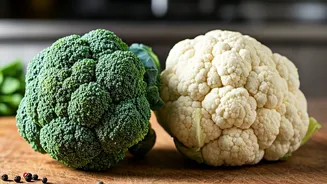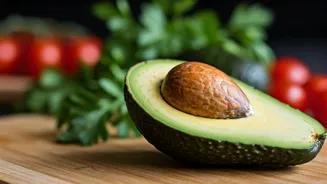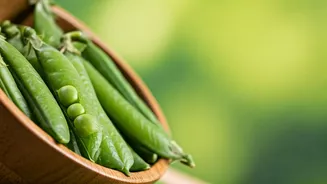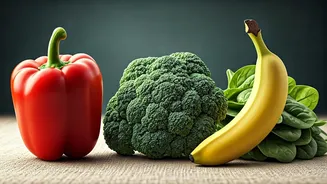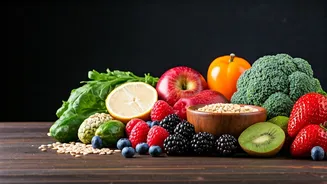Millet Introduction and Overview
Millets, ancient grains rich in nutrients, have recently gained significant attention for their health benefits. These grains are gluten-free and easily
digestible, making them suitable for people with various dietary restrictions. The article will specifically focus on eight different types of millet and their positive impact on health. This includes discussing how each grain can help address particular health issues, offering a comprehensive overview of their individual benefits and uses. These grains are not just nutritious but also versatile and can be used in diverse culinary applications, adding both flavor and health to your meals. The eight millets highlighted present a variety of options, allowing individuals to customize their diet to meet specific health objectives. The information ensures that readers have a thorough understanding of the health benefits these grains provide.
Pearl Millet (Bajra)
Pearl millet, also known as Bajra, is a staple in many regions and recognized for its high iron content, which is essential for blood health and preventing anemia. It is also a good source of fiber, aiding digestion and promoting gut health. Pearl millet's low glycemic index makes it a great choice for individuals managing blood sugar levels, helping to maintain stable glucose levels. Incorporating pearl millet into your diet can support overall well-being by providing essential nutrients. It is a highly versatile grain that can be incorporated into many recipes. It can be used to make porridge, flatbreads, and even snacks. The benefits of including pearl millet in your diet extend to weight management, as it can help you feel fuller for longer periods, thus helping to regulate appetite and prevent overeating. Consider including pearl millet for a healthy addition to your diet.
Finger Millet (Ragi)
Finger millet, or Ragi, is rich in calcium, which is crucial for maintaining bone health, making it an excellent choice for growing children and adults alike. Additionally, Ragi contains essential amino acids. These amino acids are vital for overall body function and development. This millet also provides significant amounts of dietary fiber, supporting digestion and preventing constipation. Including finger millet in the diet can help in the management of diabetes due to its slow release of glucose, which prevents sudden spikes in blood sugar levels. Ragi also has antioxidant properties that protect against cellular damage. Ragi can be prepared in different ways, such as porridge, dosa, and roti, making it a flexible ingredient. Regularly consuming finger millet can improve overall health due to its nutrient density.
Foxtail Millet (Kangni)
Foxtail millet, known as Kangni, is a great source of carbohydrates, providing sustained energy throughout the day. Its high fiber content contributes to improved digestion and can help prevent constipation. This millet also contains essential minerals, such as magnesium, which supports muscle and nerve function. The presence of antioxidants in foxtail millet helps protect the body against free radicals and oxidative stress, supporting overall health. Its benefits extend to improving skin health, as the nutrients in foxtail millet help promote glowing skin and overall well-being. It also helps in managing cholesterol levels. Foxtail millet is a versatile grain that can be used in various recipes, like porridge and upma, making it a nutritious and tasty addition to your meals. This is a good choice for those needing more energy and improved digestive health.
Little Millet (Kutki)
Little millet, or Kutki, is a small, versatile grain that is rich in fiber, which aids digestion and supports gut health. It is also a good source of essential minerals, contributing to overall health. Due to its slow-digesting carbohydrates, little millet helps manage blood sugar levels and is beneficial for people with diabetes. Its high fiber content promotes a feeling of fullness, which can assist in weight management by reducing overall calorie intake. The gluten-free nature of little millet makes it suitable for individuals with gluten sensitivities or those following a gluten-free diet. It is a nutritious alternative to other grains. Kutki is a adaptable grain that can be used in numerous dishes like rice and porridge. Regularly consuming little millet can positively contribute to a balanced diet and improved health.
Proso Millet (Chena)
Proso millet, or Chena, is one of the quickest-cooking millets, making it a convenient option for busy lifestyles. It's a good source of protein, which is essential for muscle repair and growth. The fiber in proso millet aids digestion and improves gut health. Proso millet is also rich in essential amino acids that contribute to bodily functions. It's known for its ability to regulate blood sugar levels, making it suitable for people with diabetes. This millet also contains magnesium. Magnesium supports heart health and nerve function. Proso millet can be used in various dishes, from porridge to salads, and is a healthy alternative to refined grains. Including proso millet in the diet can contribute to overall well-being, promoting a healthier lifestyle. The high protein and fiber content make it a filling and nutritious food choice.
Barnyard Millet (Sanwa)
Barnyard millet, or Sanwa, is another quick-cooking option, making it an excellent choice for a quick and nutritious meal. It is a good source of fiber, which helps promote better digestion and regulates bowel movements. Barnyard millet is also rich in essential minerals, which are crucial for maintaining bodily functions. Its low glycemic index makes it a valuable choice for controlling blood sugar levels, helping to prevent sharp spikes. It is an ideal grain for people with diabetes. The high fiber content in barnyard millet can promote weight loss by increasing satiety, helping to reduce calorie intake. Its mild flavor and versatility allow it to be used in various dishes, similar to rice. Regularly incorporating barnyard millet into the diet supports overall health and provides essential nutrients.
Kodo Millet
Kodo millet is a nutritional powerhouse. It is a good source of fiber, aiding in digestion and promoting gut health. This millet also contains essential minerals, supporting overall body functions. Kodo millet helps manage blood sugar levels, making it beneficial for people with diabetes. The high fiber content also helps in weight management. It can be a part of various dishes, from breakfast porridges to side dishes, offering flexibility in your meals. Regularly consuming kodo millet can contribute to a balanced diet and improve overall health, due to its nutrient density. It is an excellent choice for those seeking a gluten-free and nutritious grain option. Adding Kodo millet is a great way to improve health.
Millet Benefits Summary
In conclusion, millets offer a wide array of health benefits, ranging from improved digestion and blood sugar control to enhanced bone health and weight management. The eight millets discussed, Pearl millet (Bajra), Finger millet (Ragi), Foxtail millet (Kangni), Little millet (Kutki), Proso millet (Chena), Barnyard millet (Sanwa), and Kodo millet, each have unique nutritional profiles that can contribute to overall well-being. By incorporating these grains into your diet, you can diversify your meals and ensure you are getting a wide spectrum of nutrients, supporting a healthier lifestyle. The versatility of millets also makes them easy to include in various dishes. So, consider these grains to provide comprehensive benefits for your health and vitality.
